 W
WThe 24 cm houfnice vz.39 was a Czechoslovak-designed siege howitzer used in the Second World War. It was kept in production after the German occupation of Czechoslovakia in March 1939 and eighteen were delivered to the Germans. It was only used by the Army's Artillery Regiment 814 and entered service shortly before the Battle of France in 1940. The regiment participated Operation Barbarossa and in the Sieges of Sevastopol and Leningrad.
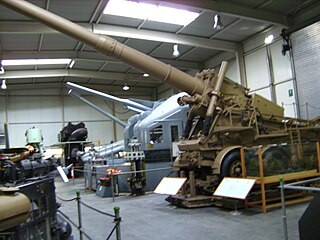 W
WThe 24-cm-Kanone 3 was a German heavy siege gun used in the Second World War by the first battalion of Artillerie-Regiment 84. Four were in service when Germany invaded Poland, assigned to the first two batteries of I./AR 84. In the Battle of France the battalion still only had four guns. By Operation Barbarossa all three batteries were equipped with two guns apiece. This situation did not change for the next two years.
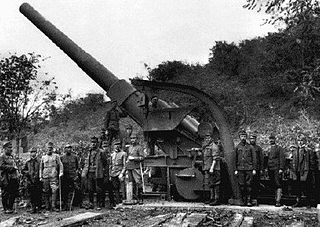 W
WThe 24 cm Kanone M. 16 was a super-heavy siege gun used by Austria-Hungary during World War I and by Nazi Germany during World War II. Only two were finished during World War I, but the other six were completed in the early twenties and served with the Czechoslovak Army until they were bought by the Germans after the German occupation of Czechoslovakia in 1938. During World War I, one gun served on the Western Front and the other on the Italian Front. During World War II, they saw action in the Battle of France, Operation Barbarossa and the siege of Leningrad.
 W
WThe 24 cm Mörser M 98 was a heavy siege howitzer used by Austria-Hungary during World War I. It was designed to attack modern fortifications, but its short range and ineffective ammunition led to the development of the more deservedly famous 30.5 cm Mörser M 11 and M 16.
 W
WThe 38 cm Belagerungshaubitze M 16 was a super-heavy siege howitzer used by Austria-Hungary during World War I.
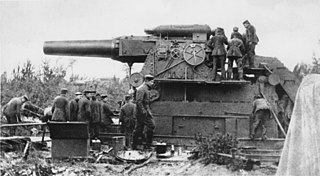 W
WThe 42 cm kurze Marinekanone L/12, or Gamma-Gerät, was a German siege gun built by Krupp. The Gamma-Gerät's barrel diameter was 42 cm (17 in), making it one of the largest artillery pieces ever fielded. It was designed from 1906 to 1910, then used by the Imperial German Army during World War I at various sieges and battles in Belgium, France, Poland, and Serbia. A single Gamma-Gerät survived World War I and saw limited use in World War II by the Wehrmacht to attack the Maginot Line and besiege Sevastopol.
 W
WThe 210 mm gun M1939 (Br-17) was a Czechoslovak heavy siege gun used by the Soviet Union during World War II. After the Germans occupied Czechoslovakia in March 1939 they took over the Škoda Works, which had been working on this design and a companion 305 mm howitzer. As a result of the Molotov–Ribbentrop Pact the Germans sold both designs to the Soviet Union. It is not entirely clear that Škoda actually built the weapons itself or merely supplied the blueprints.
 W
WType 1915 305 mm howitzer was a Russian heavy howitzer that saw service during World War I and II. Originally intended for Naval use, it was later purchased by the Army at a cost of 271,500 Rubles apiece, with the first order of 8 being sent on 13 August 1915.
 W
WThe 305 mm howitzer M1939 (Br-18) was a Soviet superheavy siege howitzer used by the Soviet Union during World War II. After the Germans occupied Czechoslovakia in March 1939 they took over the Škoda Works, which had been working on this design and a companion 210 mm gun. After a successful test firing 5 July 1939, as a result of the Molotov–Ribbentrop Pact the Germans sold both designs to the Soviet Union. It is not entirely clear that Skoda actually built the weapons itself or merely supplied the blueprints. At any rate, very few weapons seem to have been built; so few, in fact, that there's no record of the Germans capturing any during Operation Barbarossa.
 W
WThe 42 cm kurze Marinekanone 14 L/12, or Minenwerfer-Gerät (M-Gerät), popularly known by the nickname Big Bertha, was a German siege howitzer built by Krupp AG in Essen, Germany and fielded by the Imperial German Army from 1914 to 1918. The M-Gerät had a 42-centimetre (17 in) calibre barrel, making it one of the largest artillery pieces ever fielded. It was first designed in 1911 and entered production the next year. Test firing began in early 1914, and the gun was estimated to be finished by October. When World War I broke out, the two available M-Gerät guns, still prototypes, were sent to Liège and destroyed Forts Pontisse and Loncin. German soldiers bestowed the gun with the nickname "Big Bertha," which then spread through German newspapers to the Allies, who used it as a nickname for all superheavy German artillery. The Paris Gun, used in 1918 after all Big Berthas had been removed from service, has historically been confused for the M-Gerät.
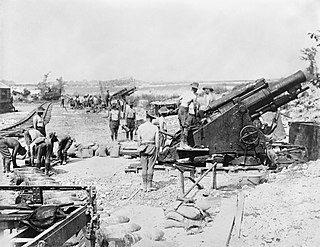 W
WThe Ordnance BL 9.2-inch howitzer was a heavy siege howitzer that formed the principal counter-battery equipment of British forces in France in World War I. It equipped a substantial number of siege batteries of the Royal Garrison Artillery. It remained in service until about the beginning of World War II.
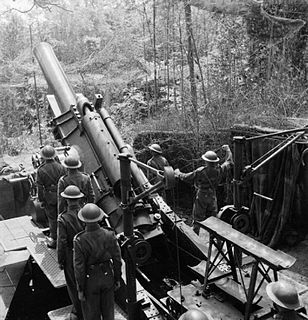 W
WThe Ordnance BL 12-inch howitzer was a scaled-up version of the successful BL 9.2-inch siege howitzer.
 W
WThe Ordnance BL 15-inch howitzer was developed by the Coventry Ordnance Works late in 1914 in response to the success of its design of the 9.2-inch siege howitzer.
 W
WThe bombard is a type of cannon or mortar which was used throughout the Middle Ages and the early modern period. Bombards were mainly large calibre, muzzle-loading artillery pieces used during sieges to shoot round stone projectiles at the walls of enemy fortifications, enabling troops to break in. Most bombards were made of iron and used gunpowder to launch the projectiles. There are many examples of bombards, including Mons Meg, the Dardanelles Gun, and the handheld bombard.
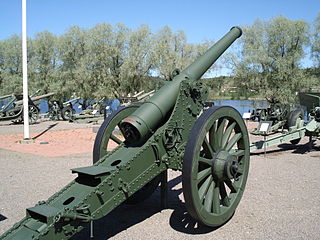 W
WThe Canon de 120 mm L modèle 1878 – was a French piece of siege and field artillery which was widely used during the First World War and despite its obsolescence, it was still in use by some nations during the Second World War.
 W
WThe Canon de 220 L mle 1917 was a French heavy field gun design which served with France, Germany and Italy during World War I and World War II.
 W
WThe Basillica or Great Turkish Bombard is a 15th-century siege cannon, specifically a super-sized bombard, which saw action in the 1807 Dardanelles operation. It was built in 1464 by Turkish military engineer Munir Ali and modelled after the Orban bombard that was used for the Ottoman besiegers of Constantinople in 1453.
 W
W"Karl-Gerät" (040/041), also known as Mörser Karl, was a World War II German self-propelled siege mortar (Mörser) designed and built by Rheinmetall. Its heaviest munition was a 60 cm (24 in) diameter, 2,170 kg (4,780 lb) shell, and the range for its lightest shell of 1,250 kg (2,760 lb) was just over 10 km (6.2 mi). Each gun had to be accompanied by a crane, a two-piece heavy transport set of railcars, and several modified tanks to carry shells.
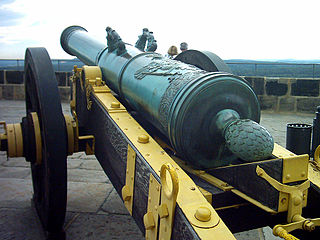 W
WA kartouwe is a siege gun used in European warfare during the 16th and 17th centuries. The name is a corruption of Latin quartana. Kartouwe is of Dutch origin, in the Holy Roman Empire the gun was called Kartaune in German or cartouwe in contemporary Latin, in the Swedish Empire Kartow, spelling variants include kartouw, kartouve, cartow, cartaun, courtaun and others.
 W
WThe Mortier de 220 mm L modèle 1880 was a French heavy mortar employed as siege artillery during the First world war.
 W
WThe Mortier de 270 mm modèle 1885 was a French heavy mortar employed as siege artillery during the First world war.
 W
WThe Mortier de 270 mm modèle 1889 sur affût G was a heavy mortar originally employed as coastal artillery and later converted to the siege artillery role. Mle 1889 mortars were used in both the First world war and Second world wars.
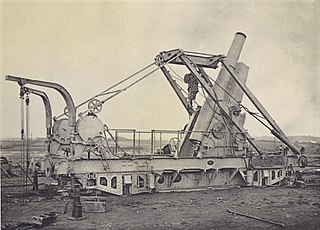 W
WThe Mortier de 293 Danois sur affut-truck modèle 1914 was a French railway gun and siege gun used by the French Army during World War I and World War II.
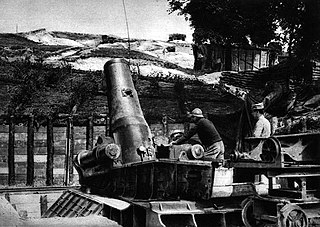 W
WThe Mortier de 370 modèle 1914 Filloux (MLE) is a siege mortar. It was designed before the First world war and was used during the First world war.
 W
WThe Obice da 280 was an Italian coastal defense and siege howitzer designed in 1884 by the British Armstrong firm and produced under license by the Ansaldo company during the late 1800s. It was used during both the First and Second World Wars.
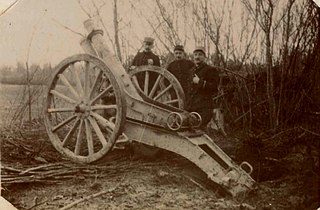 W
WThe Obusier de 120 mm C modèle 1890 - was a French howitzer designed by Captain Louis Henry Auguste Baquet and employed by the French army during the First World War. It was one of the first modern howitzers equipped with a recoil system.
 W
WThe Obusier de 155 mm C modèle 1881 - was a French howitzer designed by Colonel Charles Ragon de Bange and employed by the French army during the First World War.
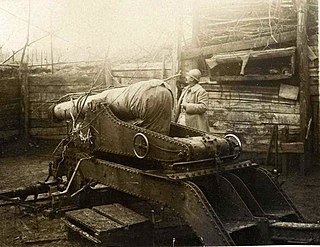 W
WThe Obusier de 155 mm C modèle 1890 - was a French howitzer designed by Captain Louis Henry Auguste Baquet and employed by the French army during the First World War. It was one of the first modern howitzers equipped with a recoil system.
 W
WThe Paris Gun was the name given to a type of German long-range siege gun, several of which were used to bombard Paris during World War I. They were in service from March to August 1918. When the guns were first employed, Parisians believed they had been bombed by a high-altitude Zeppelin, as the sound of neither an aeroplane nor a gun could be heard. They were the largest pieces of artillery used during the war by barrel length, and qualify under the (later) formal definition of large-calibre artillery. Also called the "Kaiser Wilhelm Geschütz", they were often confused with Big Bertha, the German howitzer used against Belgian forts in the Battle of Liège in 1914; indeed, the French called them by this name as well. They were also confused with the smaller "Langer Max" cannon, from which they were derived; although the famous Krupp-family artillery makers produced all these guns, the resemblance ended there.
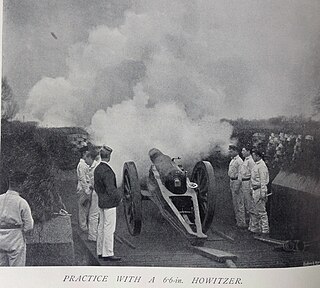 W
WThe RML 6.6 inch howitzer was a British Rifled, Muzzle Loading (RML) Howitzer manufactured in England in the 19th century, which fired a projectile weighing approximately 100 pounds (45 kg). It was used in siege batteries and in fortifications.
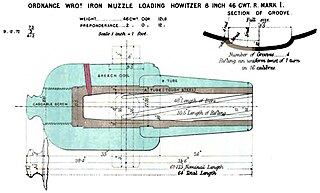 W
WThe RML 8-inch howitzer was a British Rifled, Muzzle Loading (RML) Howitzer manufactured in England in the 19th century, which fired a projectile weighing approximately 180 pounds (82 kg). It was used in siege batteries and in fortifications.
 W
WSchwerer Gustav was a German 80-centimetre (31.5 in) railway gun. It was developed in the late 1930s by Krupp in Rügenwalde as siege artillery for the explicit purpose of destroying the main forts of the French Maginot Line, the strongest fortifications in existence at the time. The fully assembled gun weighed nearly 1,350 tonnes, and could fire shells weighing 7 t to a range of 47 km (29 mi). The gun was designed in preparation for the Battle of France, but was not ready for action when the battle began, and in any case the Wehrmacht's Blitzkrieg offensive through Belgium rapidly outflanked and isolated the Maginot Line's static defences, eventually forcing the French to flee in panic and surrender. Gustav was later deployed in the Soviet Union during the Battle of Sevastopol, part of Operation Barbarossa, where, among other things, it destroyed a munitions depot located roughly 30 m (98 ft) below ground level. The gun was moved to Leningrad, and may have been intended to be used in the Warsaw Uprising like other German heavy siege pieces, but the uprising was crushed before it could be prepared to fire. Gustav was destroyed by the Germans near the end of the war in 1945 to avoid capture by the Soviet Red Army.
 W
WSiege artillery is heavy artillery primarily used in military attacks on fortified positions. At the time of the American Civil War, the U.S. Army classified its artillery into three types, depending on the gun's weight and intended use. Field artillery were light pieces that often traveled with the armies. Siege and garrison artillery were heavy pieces that could be used either in attacking or defending fortified places. Seacoast artillery were the heaviest pieces and were intended to be used in permanent fortifications along the seaboard. They were primarily designed to fire on attacking warships. The distinctions are somewhat arbitrary, as field, siege and garrison, and seacoast artillery were all used in various attacks and defenses of fortifications. This article will focus on the use of heavy artillery in the attack of fortified places during the American Civil War.
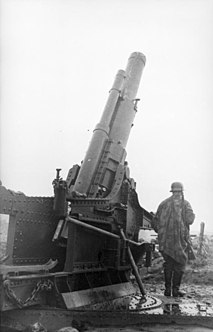 W
WThe Škoda 220 mm howitzer was a siege howitzer design which served with Germany, Poland, and Yugoslavia before and during World War II.
 W
WThe Škoda 30.5 cm Mörser M.11 was a siege howitzer produced by Škoda Works and used by the Austro-Hungarian Army during World War I and by Nazi Germany in World War II.
 W
WThe Tsar Cannon is a large early modern period artillery piece on display on the grounds of the Moscow Kremlin. It is a monument of Russian artillery casting art, cast in bronze in 1586 in Moscow, by the Russian master bronze caster Andrey Chokhov. Mostly of symbolic impact, it was never used in a war. However, the cannon bears traces of at least one firing. Per the Guinness Book of Records it is the largest bombard by caliber in the world, and it is a major tourist attraction in the ensemble of the Moscow Kremlin.
 W
WThe Type 7 30 cm howitzer was a howitzer used by the Imperial Japanese Army in the Second Sino-Japanese War, Soviet–Japanese border conflicts and during the Pacific Campaign in World War II. The designation Type 7 indicates its year of introduction, the seventh year of the reign of Emperor Taishō, or 1918 according to the Gregorian calendar.
 W
WThe Type 45 240 mm howitzer was a siege gun used by the Imperial Japanese Army during World War I and World War II. The Type 45 designation was given to this gun as it was accepted in the 45th year of Emperor Meiji's reign (1912). It was the first such weapon to be entirely designed in Japan.
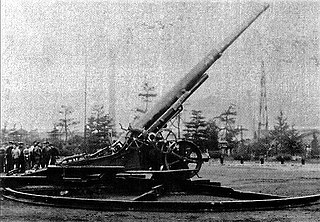 W
WThe Type 96 15 cm cannon was a siege gun used by the Imperial Japanese Army in the Japanese-Soviet War and during the Pacific War from 1936 to 1945. The designation Type 96 indicates the year of its introduction, Kōki year 2596 or 1936 according to Gregorian calendar.
 W
WThe Type 96 24 cm howitzer was a siege gun used by the Imperial Japanese Army in the Japanese-Soviet War and during the Pacific War from 1936 to 1945. The designation Type 96 indicates the year of its introduction, Kōki year 2596 or 1936 according to Gregorian calendar.